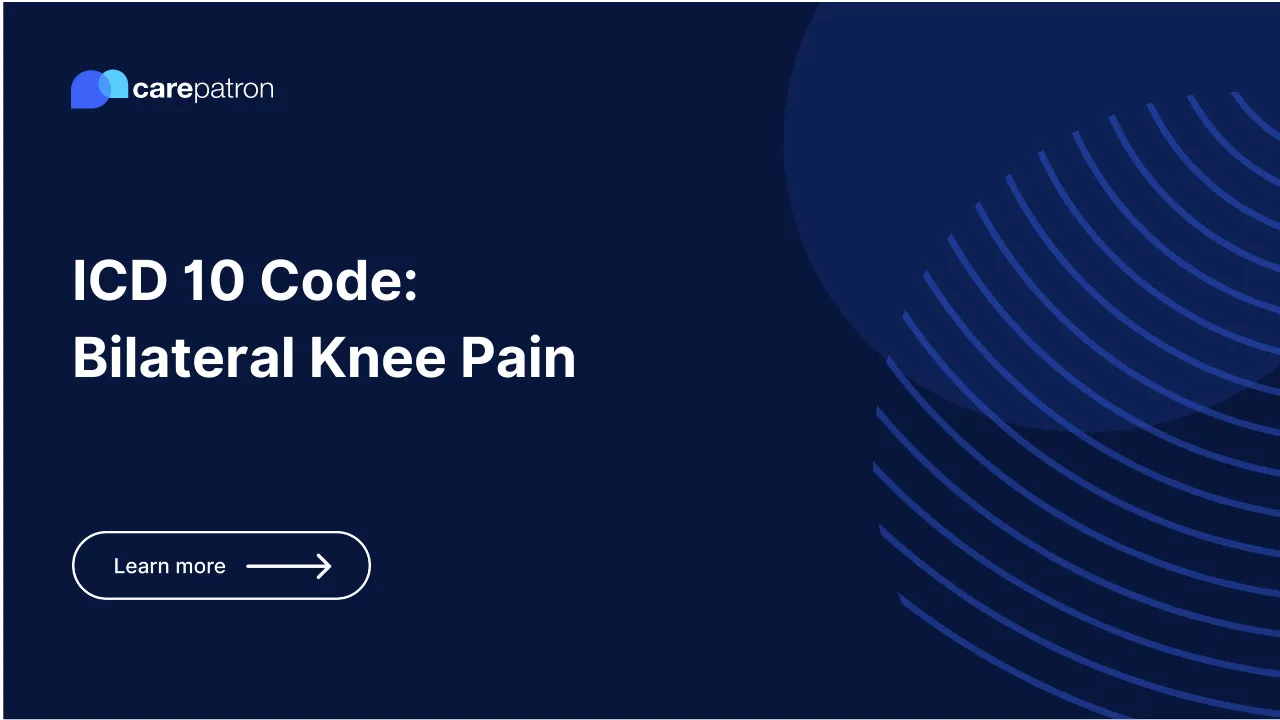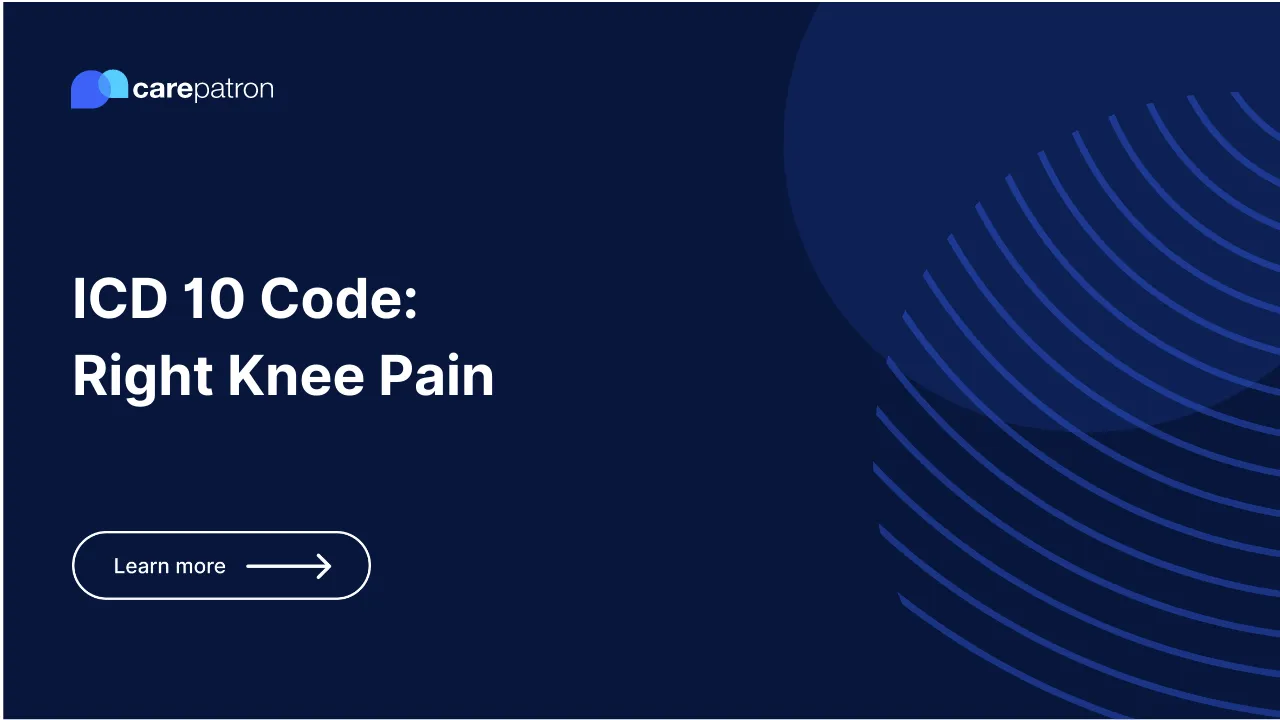Lower Back Pain ICD-10-CM Codes
Explore ICD-10 Codes Used for Lower Back Pain, including coding system, treatment planning, and tracking health trends.

What ICD-10 Codes are Used for Lower Back Pain
There are many ICD 10 lower back pain codes, but here are the common ones;
M54.50
This is one of the Lower Back Pain ICD Codes used to describe pain in the lower back and chronic lower back pain ICD 10. It is often used when the pain is mild, or the doctor is unsure what is causing it. The pain may be sharp or dull, and it may be localized or widespread. Other symptoms, such as stiffness, weakness, or numbness, may accompany it.
M54.51
Used to describe pain in the lower back caused by a problem with the vertebrae, the bones that make up the spine. This can include issues such as arthritis, osteoporosis, or spinal stenosis. The pain is typically dull and aching and may be worse with activity or when sitting or standing for long periods. Like the previous one, it may also accompany other symptoms, such as stiffness, weakness, or numbness.
M54.59
This code describes pain in the lower back that does not fit into any of the other categories. It can include pain caused by muscle spasms, pregnancy, or certain medical conditions such as fibromyalgia or lupus. The pain may be sharp or dull, and it may be localized or widespread. Other symptoms, such as stiffness, weakness, or numbness, may accompany it.
M51.2
This code is used to describe pain in the lower back that is caused by a displaced intervertebral disc. This can happen when the disc ruptures or bulges, putting pressure on the nerves in the spine. The pain is typically dull and aching and may radiate down one or both legs. It may also be accompanied by numbness, tingling, and leg weakness.
M54.4
This code is used to describe pain in the lower back that is accompanied by sciatica. Sciatica is pain that radiates down the back of one or both legs. It is caused by pressure on the sciatic nerve, which runs from the lower back down the back of the legs. The pain is typically sharp and burning, and it may be worse when sitting or standing. It may also be accompanied by numbness, tingling, and weakness in the legs.
M54.16
This lower back pain with radiculopathy ICD 10 code is a medical classification code used to diagnose radiculopathy, a condition that occurs when a nerve root in the spine is compressed or irritated. Radiculopathy can cause pain, numbness, and tingling in the back, buttocks, and legs. The lumbar region is the lower part of the spine, which is made up of five vertebrae.
S39.012
This code is used to describe pain in the lower back that is caused by a muscle or ligament strain. It is often the result of lifting something heavy, twisting suddenly, or sitting or standing for long periods of time. The pain is typically sharp and localized, and it may be accompanied by stiffness and swelling.
S37.401A
This code describes the initial diagnosis of an unspecified injury to an intervertebral disc. A sudden twisting motion, a fall, or a direct blow to the back may have caused the injury. The pain is typically sharp and severe, and other symptoms, such as stiffness, weakness, or numbness, may accompany it.
S37.401D
This code is used to describe a subsequent encounter for the same injury. The injury may have healed, but the pain may still be present. The pain may be less severe than initially, but it may still be bothersome.
S37.401S
This ICD 10 code for lower back pain code is used to describe a condition resulting from the injury to the intervertebral disc. The condition may be pain, stiffness, weakness, or numbness. It may also be a more serious condition, such as spinal stenosis or nerve damage.
Which Lower Back Pain ICD codes are Billable
Yes, all of the codes that you listed are billable. They are all part of the ICD-10-CM (International Classification of Diseases, Tenth Revision, Clinical Modification).
Clinical Information
- Various ICD-10 codes are available for diagnosing lower back pain based on specific symptoms and medical history.
- Lower back pain is a common condition affecting people of all ages, often caused by muscle strain or ligament sprain.
- Other factors like disc herniation, spinal stenosis, and arthritis can contribute to lower back pain.
- Lower back pain can be acute or chronic, with acute episodes resolving within weeks and chronic pain lasting months or years.
- Treatment for lower back pain is personalized based on the underlying cause and individual symptoms.
- Common treatment modalities include physical therapy, medication for pain and inflammation, and surgery in rare cases.
- Accurate diagnosis and treatment planning for lower back pain are facilitated by utilizing appropriate ICD-10 codes and considering the patient's unique circumstances.
Synonyms Include
- Lumbago
- Sacral pain
- Lumbosacral pain
- Lumbar pain
- Backache
- Backache
- Pain in the lower back
- Pain in the lumbar region
- Pain in the sacrum
.png)
Commonly asked questions
A Lower Back Pain ICD code should be used when a patient is diagnosed with lower back pain. This code can be used for any type of lower back pain, regardless of the cause.
Yes, Lower Back Pain diagnoses are billable. This means insurance companies will reimburse healthcare providers for treating patients with lower back pain.
Physical therapy is a non-invasive treatment that improves the lower back range of motion, strength, and flexibility through techniques like stretching and exercises. Medication, including over-the-counter and prescription pain relievers, can alleviate pain and inflammation. Surgery is a last resort for severe cases or when other treatments have been ineffective. Consultation with a healthcare professional is crucial to determine the most suitable treatment for individual needs.

.jpg)




.webp)
.webp)
.webp)
.webp)
.webp)
.webp)
.webp)
.webp)
.webp)
.webp)
.webp)
.webp)
.webp)
.webp)
.webp)
.webp)
.webp)
.webp)
%2520(1).webp)
.webp)
.webp)
.webp)
.webp)
.webp)
.webp)
.webp)
.webp)
.webp)
.webp)
.webp)
.webp)
.webp)
.webp)
.webp)
%2520(1).webp)
.webp)
.webp)
.webp)
.webp)
.webp)
.webp)
.webp)
.webp)
.webp)
.webp)
.webp)
.webp)
.webp)
.webp)
.webp)
.webp)
.webp)
.webp)
.webp)
.webp)
.webp)
.webp)
.webp)
.webp)
.webp)
.webp)
.webp)
.webp)
.webp)
.webp)
.webp)
.webp)
.webp)
.webp)

.webp)
.webp)
.webp)
.webp)













.webp)
.webp)




.webp)


